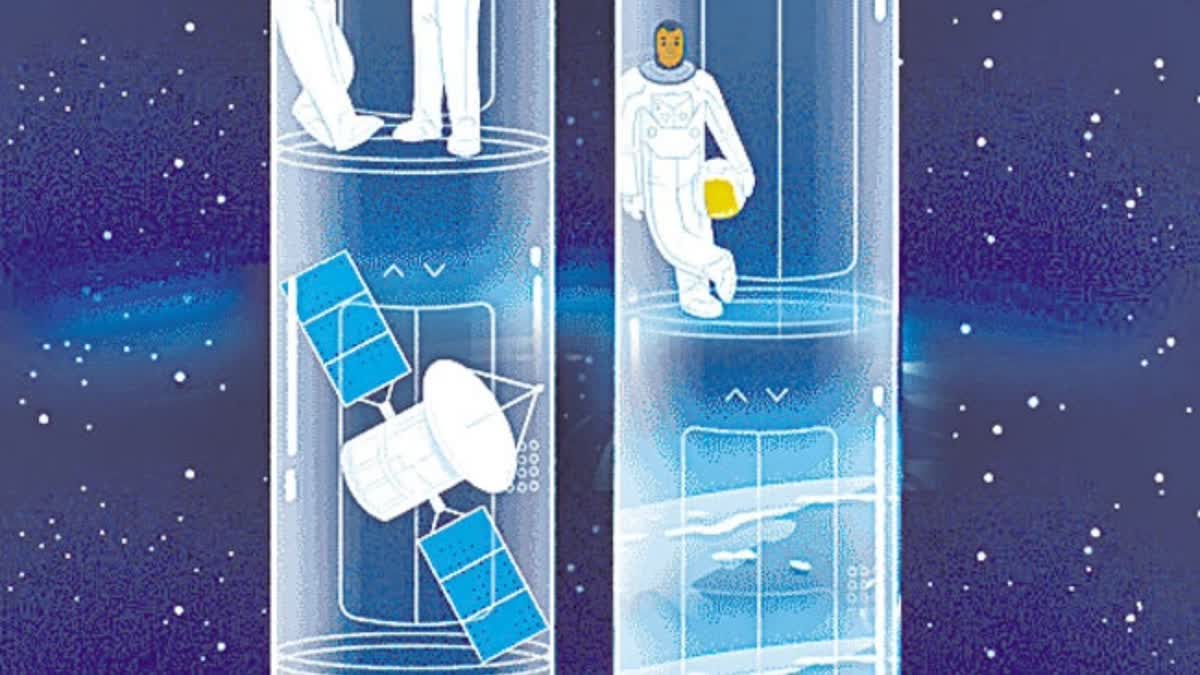Hyderabad : We use the lift to easily reach the upper floor of the building. If the same goes up further? If you can reach Space..! It all sounds like science fiction, doesn't it? A Japanese company is working to get a massive space elevator project off the rails, which has been limited to ideas for years. It is planning to start the works from next year. If realized, it would be very easy and cheap to move people and goods into space.
A 130-year-old idea: Russian rocket scientist Konstantin Tsiolkovsky first conceived the idea of this space lift. It is mentioned in the book 'Dreams of Earth and Sky' written by him in 1895. In it, he describes an imaginary tower 22,000 miles high. This idea was taken further by Russian engineer Yuri Artstanov. It is proposed to establish a cable from the Earth to a satellite in a geostationary orbit, and with its help, space travel should be done.
What is a lift?Japan's Obayashi Corporation decided to bring that idea into reality. This company has a history of realizing revolutionary projects like the world's largest TV tower 'Tokyo Skytree'. The lift proposed by this company is called Space Elevator. It enables trips into and out of Earth's orbit. Obayashi hopes to start its construction next year and complete it by 2050.
It works like this:As part of the construction of the space elevator, a cable will be laid from Earth to the satellite in geostationary orbit in Space. This satellite has the same rotational speed as the Earth. Therefore it always remains at a specific place above the earth. The space lift cable extends to a height of 96 thousand kilometers from the earth. Its counterweight is here. An 'Earth Port' will be established in the ocean in the equatorial region.
Earth port contains ballast. The cable tension is also adjusted there. Another center will be set up on the ground near the Earthport. From there to reach the earth port in the ocean, a tunnel will be set up under the ocean. With the help of this cable, electromagnetic vehicles called climbers go up and down. Humans can travel in them. The goods can be transported.
Many centers:As part of the space elevator project, the Jio station will be built at a height of 36 thousand kilometers along the cable. Visitors can go there and view the universe in zero gravity conditions. Geostationary satellites can be launched from there.
Carbon nanotube:A Mars gravity center can be established along this cable at an altitude of 3,900 km. It has about as much gravity as the surface of Mars. Also, a lunar gravity center can be established at an altitude of 8,900 km. There is gravitational force at the surface level of the moon. Experiments and training of astronauts can be done in these two centers.
At an altitude of 23,750 km, a low earth orbit gate (Leo Gate) will be established. Leo satellites can be launched from there. They reach an orbit 300 km above the earth and rotate there.
Solar power stations can be set up in geostationary orbit with the help of this lift. The electricity generated there can be sent to Earth.
